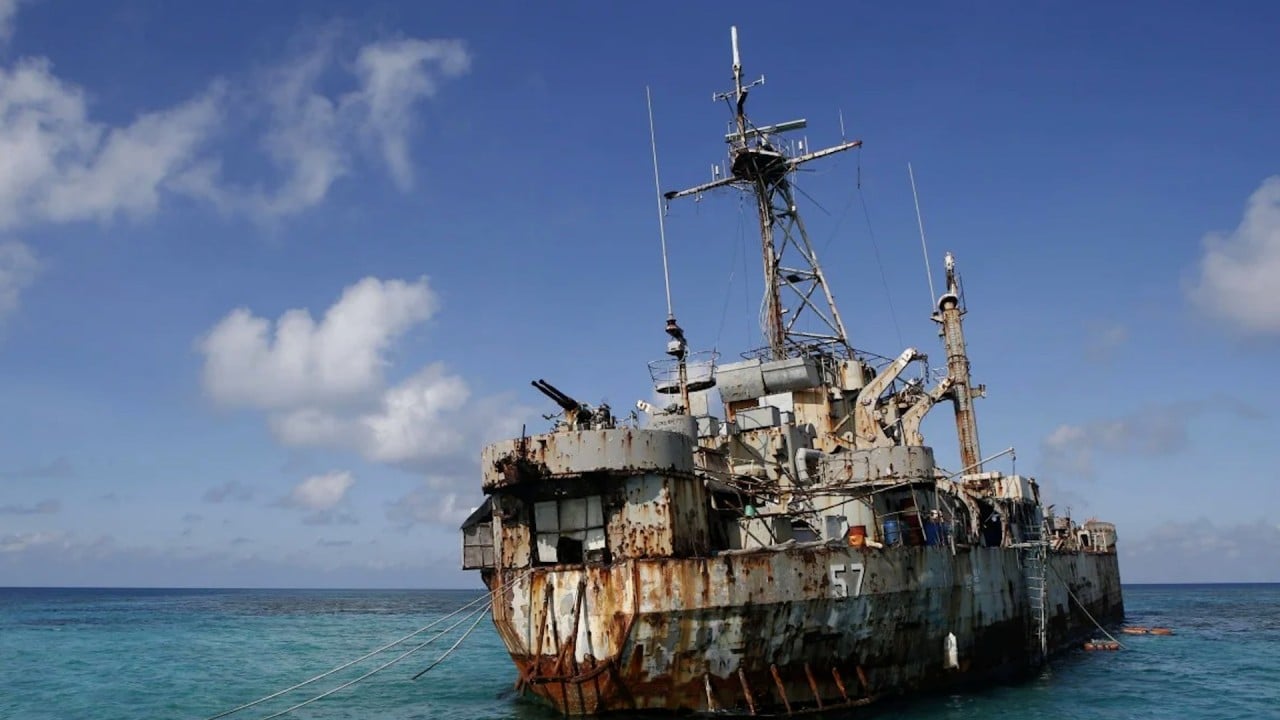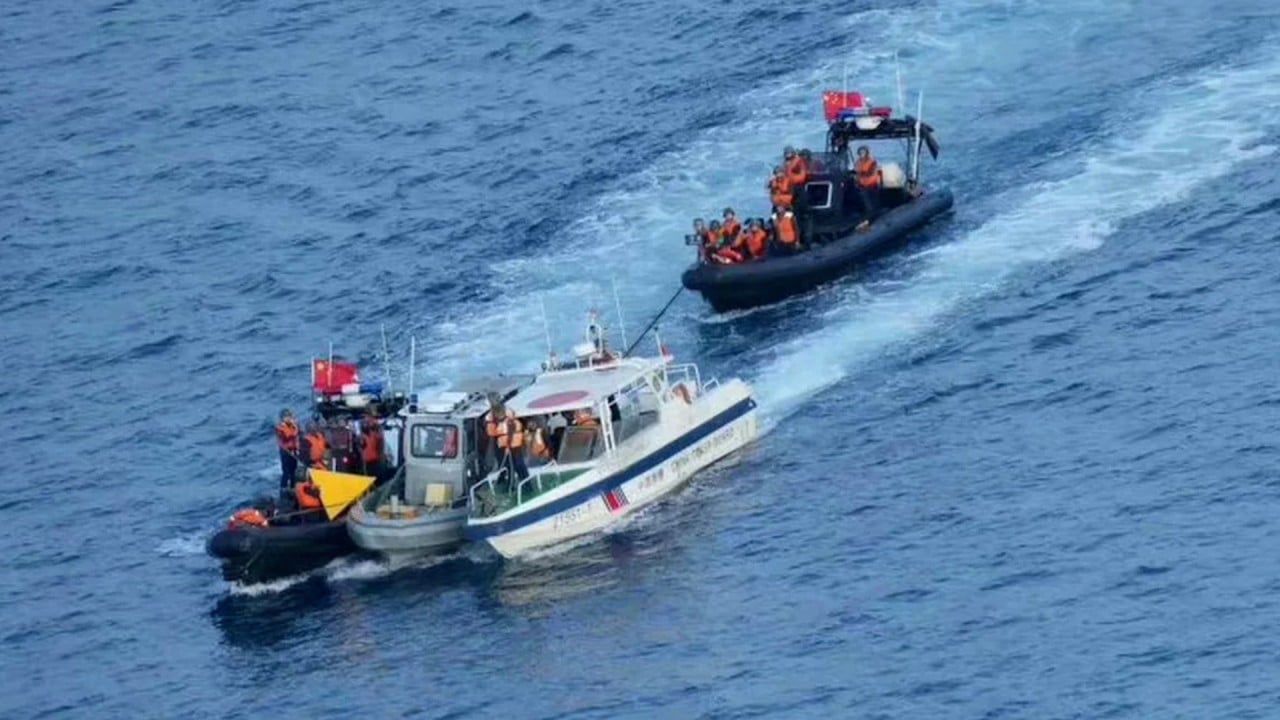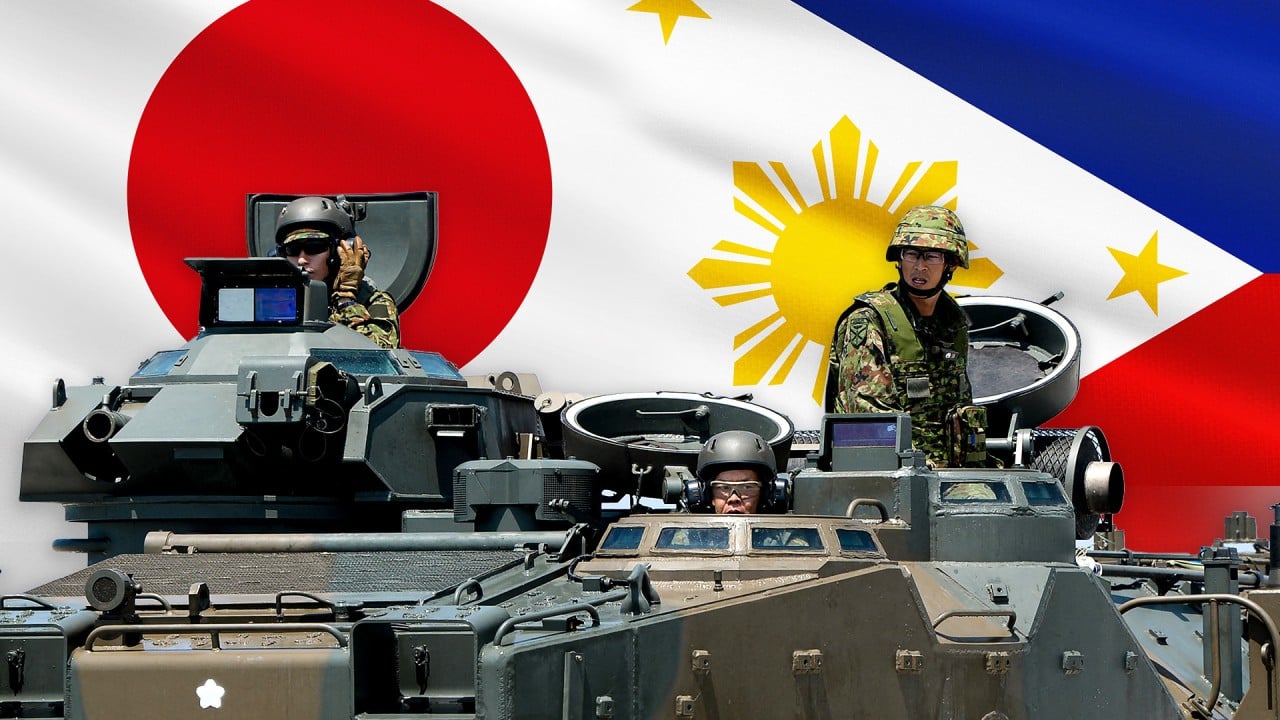China’s coastguard faces ‘unprecedented strain’ as tensions rise on 3 fronts
Meanwhile Beijing said its coastguard had driven Japanese vessels away from the disputed waters as part of the daily “rights protection patrols”, which ran for 215 straight days until they were halted last week by the advent of Typhoon Gaemi.
Some observers say such incidents are becoming the new norm and have prompted regional allies of the United States to step up cooperation to counter what they see as an increasing threat.
While observers have downplayed the risk of any of these fronts escalating into a wider conflict, Chen Xiangmiao, an associate research fellow at the National Institute for South China Sea Studies, said it was an increasing challenge for China’s coastguard to manage these tensions.
He cited US support for the Philippines, Taiwan, and Japan and Manila’s efforts to strengthen its own coastguard forces, saying: “If they increase their forces and intensify their provocations, we also need to enhance our capabilities, including the number of law enforcement vessels, personnel, and maritime intelligence sensing capabilities.”
The laws allow China’s coastguard to detain people it deems to have been trespassing for 60 days without trial.
Diane Desierto, professor of law and global affairs at the University of Notre Dame in the US, said these steps had allowed the force to carry out “military operations with no territorial limits”.
In recent years, the China Coast Guard has become one of the largest and best-armed forces of its kind in the world. It was brought under the command of the People’s Armed Police and placed under military leadership in 2018 and since then it has been given a number of old warships by the navy as it expands its fleet.
It has been further strengthened by large purpose-built coastguard vessels, which the Pentagon says can operate further offshore and remain on station longer than the older models.
The exact strength of China Coast Guard is not known, but a Pentagon report published last year said that open-source reporting and commercial imagery counts indicated it had more than 150 regional and oceangoing patrol vessels of more than 1,000 tonnes.
These include more than 20 corvettes transferred from the PLA Navy and modified for coastguard operations.
But Chen said: “Even though China has larger-tonnage vessels, the United States Coast Guard has more vessels compared with China. Japan also possesses large patrol ships, and its radar technology is on par with China’s.”

Colin Koh, a senior fellow at the S. Rajaratnam School of International Studies in Singapore, said the force had seen a “rapid” build-up of vessels in the past decade, giving it a “very consistent and steady increase in offshore capacity.”
He said coastguard vessels had to be “offshore capable, meaning they are large” – with a displacement of up to 1,000 to 4,000 tonnes “especially in the case of the East China Sea and South China Sea”.
“They have to be at least more than 1,000 tonnes displacement, because they have to deal with the high sea,” Koh said.
Despite the coastguard’s growing strength, some analysts say it could struggle to sustain the increasing intensity and frequency of its operations across multiple fronts indefinitely.
Isaac Kardon, a senior fellow for China studies at the Carnegie Endowment for International Peace, said Beijing’s willingness to engage on three fronts showed a “level of confidence in the training, readiness, and law enforcement capabilities” of the coastguard but these were “extensive but not limitless”.
He described the force as “head and shoulders above” its regional counterparts, but added: “Sustaining intense stand-offs in multiple locations will inevitably strain CCG [China Coast Guard] crews, vessels, and command and control processes, especially if the situation continues to deteriorate in one or more of the key sites of contestation.
“There is little doubt that this heavy employment of CCG forces will place unprecedented strain on the organisation, including for maintenance of vessels and management of personnel.”
Koh also warned the high level of activity risked creating a “drain on manpower” that will lead to “challenges to do with retention and recruitment”.
“The operational tempo is so high, you might not get to go home, you might not get to enjoy a lot of leave, and pay is considered not so competitive. The tendency of making mistakes and getting punished is also high,” he said.
However, Hu Bo, director of the South China Sea Strategic Situation Probing Initiative, a Beijing-based think tank, said: “In terms of the strength of China’s coastguard, dealing with tensions in three directions simultaneously is not a major issue.”
Hu said the situation with Japan was “relatively stable” despite occasional frictions, but the confrontation with the Philippines was a bigger challenge.
“The Philippines is more provocative, and its policies are extremely unstable. The coastguard faces greater pressure in the South China Sea,” he said.
Since the clash in late June, China and the Philippines have been working to defuse tensions. Earlier this month, the Philippine foreign ministry said the two sides had “reached an understanding” on a “provisional arrangement” about resupplying troops stationed on the Second Thomas Shoal.
Tensions in the Taiwan Strait are also running high, with the mainland coastguard saying it would stage regular patrols near Quemoy and other Taiwanese-held islands off the coast of Fujian province.
At present six Taiwanese who entered mainland waters are being detained, including the five crew members who were held when coastguard officers boarded their fishing boat earlier this month. .
In a similar incident in March, two other men were detained after straying into mainland waters while out fishing. One was released at the time but the other, a serving soldier, remains in detention.
Beijing regards Taiwan as part of its territory and has never renounced the use of force to reunify it. Most countries, including its main international partner the US, do not recognise Taiwan as independent, but Washington and its allies oppose a forcible change in the status quo.
Despite these tensions, Hu said: “At present, it is unlikely that these frictions will escalate into larger-scale conflicts.”
A further challenge to Beijing comes from the increasing US presence in the region, not just in terms of military activity but also maritime law enforcement.
In recent weeks the US coastguard has taken part in three-way drills with Japan and South Korea in the Sea of Japan, also known as the East Sea, and a search and rescue exercise with the Philippines.
The US allies in the region are also working together more closely. Earlier this month, Tokyo and Manila signed a defence pact allowing them to deploy troops on the other’s territory for training exercises.
Chen, from the National Institute for South China Sea Studies, said: “Facing common challenges, I believe that policy coordination and interaction between the Philippines and Japan on maritime disputes will be further enhanced.
“In terms of actions, the two countries might create hotspots both in the northern Diaoyu Islands and in several islands and reefs in the South China Sea simultaneously.”
Timothy Heath, a senior international defence researcher at the Rand Corporation think tank, said cooperation between Washington and its allies would help create a balance against China’s strength.

“[Japan and the Philippines] are at a severe disadvantage if they operate alone against China, which is what Beijing prefers. If Japan, the Philippines, and the USA cooperate, however, then China is at a disadvantage,” he said.
“This is a major reason Beijing is so opposed to multilateral cooperation between the United States and its allies.”
However, Gregory Poling, a fellow with the Southeast Asia programme at the Washington-based Centre for Strategic and International Studies, said increasing these partnerships would not have an immediate impact on China’s coastguard activities.
“This agreement will be geared toward training and capacity building for the Philippines, not direct Japanese involvement in any potential armed contingencies in the South China Sea,” Poling said.


